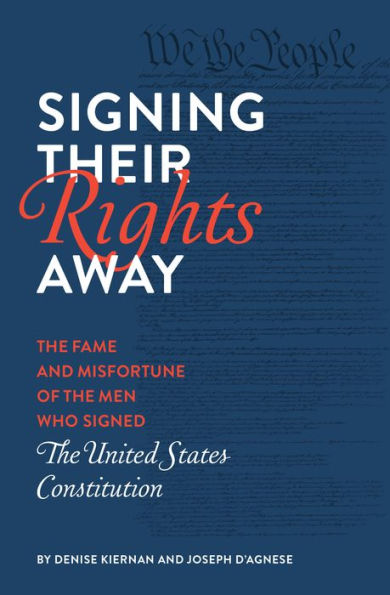Table of Contents
Introduction 11
A Constitutional Cheat Sheet 15
A Constitutional Timeline 21
I New Hampshire
John Langdon: The Signer Who Picked Up the Tab 26
Nicholas Gilman: The Most Handsome Signer 31
II Massachusetts
Nathaniel Gorham: The Signer Who Considered a Monarchy 36
Rufus King: The Signer Who Always Ran (and Never Won) 41
III Connecticut
William Samuel Johnson: The Signer Who Lived the Longest 48
Roger Sherman: The Signer Who Knew How to Compromise 52
IV New York
Alexander Hamilton: The Signer Who Died in a Duel 58
V New Jersey
William Livingston: The Signer-Poet 66
David Brearley: The Signer Who Proposed Erasing State Boundaries and Starting Over 71
William Psterson: The Son of a Door-to-Door Salesman 76
Jonathan Dayton: The Signer Who Stole $18,000 from Congress 81
VI Pennsylvania
Benjamin Franklin: The Signer Known throughout the World 88
Thomas Mifflin: The Signer Who Was Ruined by Drink 94
Robert Morris: The Signer Who Went to Debtors' Prison 99
George Clymer: The Signer Whose Home Was Destroyed by the British 105
Thomas FitzSimons: The Signer Who Loaned Away His fortune (and Never Got It Back) 109
Jared Ingersoll: The Signer Who Couldn't Keep Up with Fashion 114
James Wilson: The Signet-Turned-Fugitive 119
Gouverneur Morris: The Playboy with the Wooden Leg 125
VII Delaware
George Read: The Signer Who Signed Twice 134
Gunning Bedford Jr.: The Signer Who Trusted No One 139
John Dickinson: The Signer Who Never Signed 143
Richard Bassett: The Signer Who Overcame Religious Discrimination 148
Jacob Broom: The Invisible Signer 152
VII Maryland
James McHenry: The Signer Immortalized by the Star-Spangled Banner 158
Daniel of St. Thomas Jenifer: The Signer with the Mysterious Middle Name 163
Daniel Carroll: The Signer Who Helped Create Washington. D.C. 168
IX Virginia
George Washington: The President of the Constitutional Convention 174
John Blair: The Underachieving Signer 183
James Madison Jr.: The Father of the Constitution 188
X North Carolina
William Blount: The Signer Who … Oh, There's No Way to Dance around the Issue, This Guy Was a Crook 198
Richard Dobbs Spaight: The Other Signer Who Died in a Duel 203
Hugh Williamson: The Signer Who Believed in Aliens 208
XI South Carolina
John Rutledge: The Signer Who Attempted Suicide 214
Charles Cotesworth Pinckney: The Signer Who Wouldn't Bribe the French 220
Charles Pinckney: The Ghost Writer of the Constitution? 226
Pierce Butler: The Signer Who Turned Coat on the King 231
XII Georgia
William Few: The Signer Who Lived the American Dream 238
Abraham Baldwin: The Signer Who Pinched Pennies 243
Appendixes
I The U.S. Constitution
Text of the U.S. Constitution 250
Text of the Bill of Rights 267
Additional Amendments 269
II A Constitutional Miscellary
Preserving the Constitution 279
The Penman of the Constitution 280
William Jackson: The Fortieth Signer 281
Will the Real Constitution Printer Please Stand Up? 284
Who Signed the Bill of Rights? 286
By the Numbers 286
They Came, They Saw, They Didn't Sign 287
Immigrant Signers 291
Selected Bibliography 292
Index 295
Acknowledments 304



